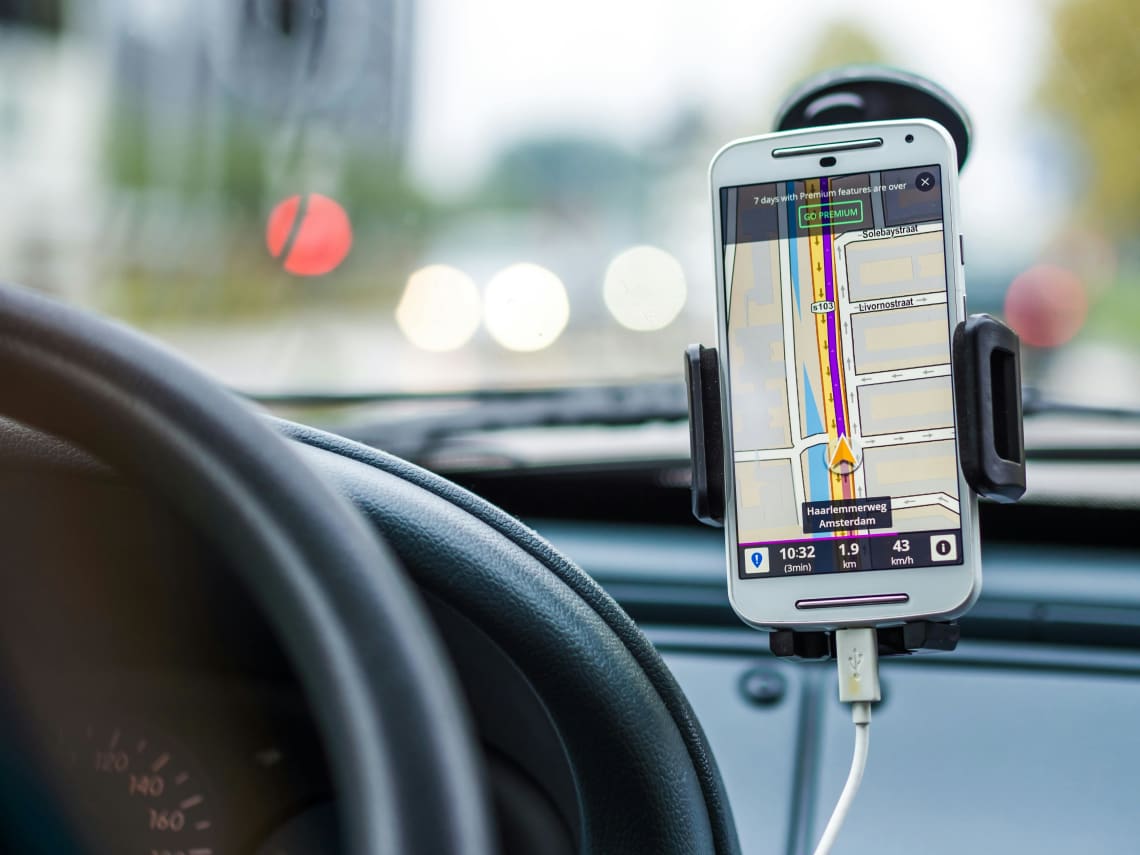How to choose the best SIM card for international travel
Discover how to stay connected globally without hefty fees with the best SIM card for international travel. Tips, types, and must-knows.
7min

Embarking on an adventure across borders? A SIM card for international travel can be your lifeline, keeping you connected without breaking the bank. With roaming charges resembling a relic of the past, savvy travelers know that switching to a local or global SIM can make all the difference.
But in a sea of options, where do you start? From understanding different types available to knowing what makes one stand out—let's dive into making your travels smoother and more connected.
You might also like to read:
- The best way to send or take money abroad
- Travel items list: essential packing tips
- The greatest travel hacking guide for a stress-free trip
Benefits of using a SIM card for international travel
Before we delve into the practical information, let’s talk about the main benefits of using a SIM card for international travel.
Nowadays, it's hard to find someone who doesn't mind being offline while traveling abroad. After all, a good internet connection allows us to use our phone as a GPS, connect with friends and family back home, research places to see or where to eat, work remotely, book accommodation and transportation during the trip, etc.
There are different ways to stay connected while you’re abroad, like looking for Wi-Fi spots, activating roaming plans offered by your home carrier or purchasing local SIM cards upon arrival. But there are some advantages that make international SIM cards a good choice for many travelers.
For starters, you’ll avoid excessive roaming charges in case your home company doesn’t offer good international packages. You’ll also be able to make sure that the SIM card is compatible with your phone, without any surprises when you're already at the destination.
And of course, there’s the convenience of being connected as soon as you land. That makes it much easier to tell folks back home that you’ve arrived safely, to find cost-effective and easier ways to get to your accommodation (using apps like Uber, for instance), etc. You won’t have to worry about looking for a local SIM card or a Wi-fi spot, which makes your trip smoother from the start.

Comparing different types of SIM cards for international travel
Advantages and disadvantages of local SIMs
Buying a local SIM at your destination can be a budget-friendly move. Many shops sell them, and it can be a good choice if you’re staying in one country for a long time.
Pros:
- Often the cheapest option
- Get a local number for your stay
- Avoid roaming fees entirely
Cons:
- Have to find and buy the SIM when you land
- May not work if your phone is carrier-locked
- Need a new SIM for each country you visit
Advantages and disadvantages of international SIMs
International SIMs are made to keep you connected across borders. Physical or eSIM, the benefits are the same.
Pros:
- One SIM covers multiple countries
- Cheaper than pay-per-use roaming
- Manage your plan from an app
- Keep your regular number active
Cons:
- More expensive than local SIMs
- Rates and coverage vary by country
- May not have a local number for calls
Advantages and disadvantages of eSIMs
A more recent invention, eSIMs are a type of international SIM card that doesn't have a physical form; you simply activate it online. The beauty is its convenience: no physical swapping, just tap to activate.
Pros:
- Instant setup - download and go
- No need to find a local SIM abroad
- Can store multiple eSIMs on your phone
- More secure than physical SIMs
- No risk of losing your home SIM
Cons:
- Requires an eSIM-compatible phone
- Not available from all carriers yet
- Some countries still require physical SIMs
Other types of SIM cards for international travel
Travel SIM Cards
A travel SIM card is made to work across multiple networks in different countries. Unlike a local SIM that only works in one place, a travel SIM has you covered worldwide.
International data SIM Cards
If you're mainly after better data rates for your phone or tablet on the go, check out international data-only SIM cards. They usually offer good data packages and low rates.
Global SIM Cards
Want it all? A global SIM card typically includes a European and U.S. number, with the option to add more international numbers. It's the ultimate in flexibility for the frequent jetsetter.
Regional SIM cards
These are only available in a certain region or continent. That means they might be cheaper of offer better coverage in that area, but won't work in other parts of the world (or will work, but with worse coverage or extra fees).

What to consider when selecting an international SIM card
When looking for the right SIM abroad, here are a few things to research and think about:
- Coverage area - will it work at all your stops?
- Data plans - how much do you need for your trip? How can you top it up if needed?
- Call rates - is the SIM data-only or does it allow you to make regular calls? Are the rates reasonable for international calls?
- Expiration - how long is the SIM card valid?
- Compatibility – are you sure it will work on your device?
- Activation process – how easy is it to set up?
Top international SIM card providers
If you’re looking to buy an international SIM card in preparation for travel across multiple countries, you can do it online.
Ready to explore your international SIM card options? Let's check out a few top providers.
OneSimCard
This option has a wide coverage area, making it one of the best travel SIMs for those traveling between multiple countries and regions. You can choose between e-SIM and traditional SIM cards and generally have a reliable coverage.
Breeze eSim
They offer coverage in over 245 mobile networks in more than 150 countries, as well as multiple networks per country for increased coverage. Beware that they only offer eSIMs, so check if your phone is compatible.
SurfRoam
This is focused on internet access for professional travelers, offering high speed internet in over 200 countries. They provide both a regular plastic SIM card (with global express delivery) and a digital eSIM, delivering data connection for almost any device. You can refill your data online, anytime.
Orange Holiday Europe
Headed to Europe? The Orange Holiday SIM covers 30 countries with generous data plans. It’s easy to install and to top-up and can be used across multiple European countries without changing your preferences on your phone.
Discover Global e-SIM Card
This can be used worldwide but has one of the best coverages of popular Asian countries, being a good choice if you’re planning on travel around there. However, like most other eSIMs, it doesn’t allow calling and texting.
Other options to consider are GigSky, TravelSim, Ultra Mobile, KnowRoaming, and KeepGo.
You might also want to read:
- The most helpful 26 tips for first time travelers
- 11 essential apps and websites for digital nomads
- Digital nomad resources: how to work while traveling full time

How to use an international SIM card
Got your travel SIM? Let's get it up and running for your trip. Most international SIMs need to be activated online or by phone before use. For eSIMs, the activation process is usually easier. The SIM will then work alongside your regular SIM.
Physical SIM cards require swapping out your home SIM, unless your phone has two SIM slots. Just make sure you keep it somewhere safe, and remember where it is, so you can switch it back when you fly home.
Topping up your international SIM card
Most providers let you top up your balance or data online. For example, with Orange Holiday Europe, you just log in and add credit using your SIM number. This lets you re-up your talk, text, or data limits as needed during your travels.
Before buying your SIM card for international travel, look into how you can top it up, whether by checking their website or reaching out to their sales or support team.
Troubleshooting common issues
If you hit a snag with your travel SIM, don't panic. Some quick fixes:
- No signal - check coverage maps, move to a new area, restart your phone
- Can't make calls - make sure you have an active plan, dial the right country code
- Data not working - confirm data roaming is on, reset network settings
Still stuck? Reach out to your SIM provider's customer service team for help.
Maximizing your international SIM card experience
To get the most out of your travel SIM, keep these tips in mind:
- Consider both convenience and affordability. Sometimes investing a bit more can spare you time and hassle.
- Don't pay for more than you need. Estimate your usage based on your trip plans. A smaller data bucket may be plenty for maps and messaging.
- Are you planning on using it for streaming, video calls, or hotspot the internet to your laptop? Go unlimited.
- Always check if the SIM card is compatible with your phone.
- If possible, avoid buying a SIM at the airport, since they often charge extra.
- Ensure there are easy ways for recharging your card. Especially when you’re traveling for a long time, being able to top it up through an app makes a big difference.
- If you’re calling home from your travel SIM, you can reduce costs by using Wi-Fi calling apps like Skype or Whatsapp, buying an international calling package from your SIM provider and checking if your plan includes free calls to certain countries.

So, whether it’s avoiding eye-watering bills, feeling more confident to travel around distant destinations or just staying in touch with those back home, a sim card for international travel might make all the difference. As you’ve seen, picking a good one isn’t rocket science—it's common sense wrapped in a bit of savvy shopping.
For more travel tips and inspiration, follow Worldpackers on social media: we’re on Instagram and Tiktok.












Better U
May 17, 2024
great